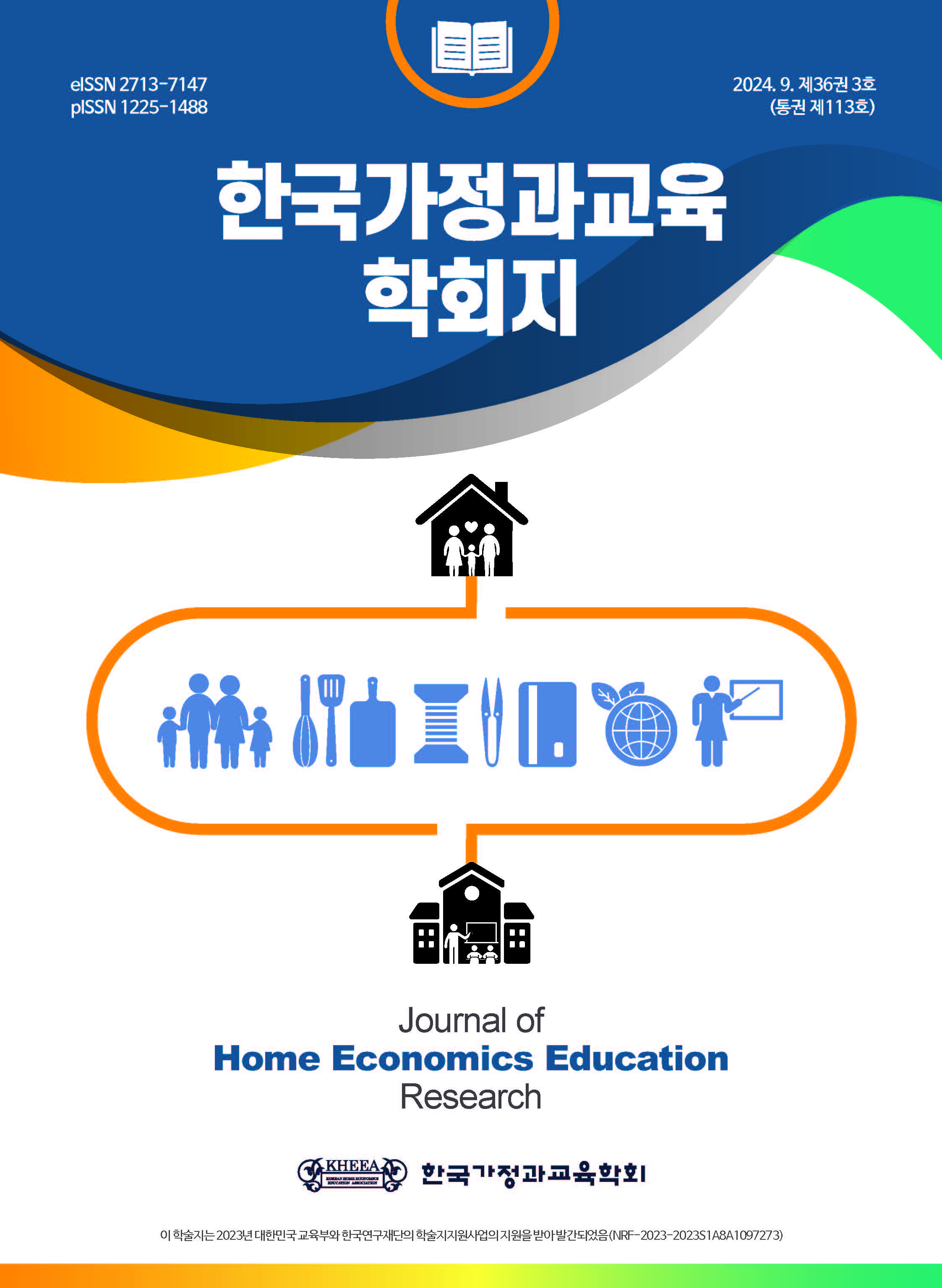중학교 가정교과 인공지능 활용 식생활 교수⋅학습 과정안 개발 및 적용
Development and Application of Dietary Teaching and Learning Plan Using Artificial Intelligence for Middle School Home Economics
- 한국가정과교육학회
- 한국가정과교육학회지
- 제36권 제3호
-
2024.0939 - 63 (25 pages)
-
DOI : 10.19031/jkheea.2024.9.36.3.39
- 243

본 연구의 목적은 가정교과 식생활 영역에서 인공지능을 활용한 수업을 설계하고 이를 실행하여 수업의 효과를 알아보는 것이다. 연구 목적을 달성하기 위해 가정과교육과정의 성취기준을 분석하여 실천적 문제 중심 수업을 선정하였고, 인공지능을 활용한 전략을 설계하여 실천적 문제 중심 수업의 과정에 투입하여 교수⋅학습 과정안을 개발하였다. 이를 중학생들에게 실행하여 세 행동체계에 미치는 영향을 검증하고 수업에서 좋았던 점과 개선할 점에 대해 평가하였다. 학습 주제는 ‘건강하고 자기주도적인 삶을 영위하기 위해 식생활과 관련하여 우리는 무엇을 해야 할까?’로 설정하고, 챗gpt(ChatGPT), 뤼튼(wrtn), 애스크업(Askup), 타입캐스트(typecast) 등 생성형 인공지능 서비스를 활용하는 4차시의 교수⋅학습 과정안, 학습 활동지, 루브릭을 개발하였다. 개발된 교수⋅학습 과정안을 광주광역시 소재 중학교 1학년 170명을 대상으로 수업을 진행하였다. 세 행동체계에 대한 사전⋅사후 검사를 통해 대응표본 t-검정을 한 결과, 사전과 사후에 유의한 차이를 보이는 것으로 나타났다(t=-2.86, p<.05). 인공지능을 활용한 식생활 수업에 대해 학생들은 식생활 문제를 분석하고 원인과 해결방안을 모색하는 과정에서 정보를 다양하고 손쉽게 얻을 수 있고, 학습 과제를 효율적으로 수행할 수 있었기에 긍정적으로 평가하였다.
The purpose of this study was to design a lesson utilizing artificial intelligence in the dietary area of home economics and to investigate the effectiveness of the lesson by implementing it. To achieve the purpose of the study, practical problem-based lessons were selected by analyzing the achievement standards of the home economics curriculum, and strategies using AI were designed and put into the process of practical problem-based lessons to develop a teaching and learning curriculum. This was implemented on middle school students to assess the impact on the three systems of action and to evaluate strengths and areas for improvement. The learning topic is set as “What dietary choices should we make to lead a healthy and self-directed life?” and developed a teaching and learning plan, learning activities, and rubrics for four sessions utilizing generative AI services such as ChatGPT, WRTN, Askup, and typecast. The developed teaching and learning plan was implemented to 170 first-grade students middle school in Gwangju. A paired sample t-test was conducted on the pre- and post-test of the three systems of action, and it was found that there was a significant difference between the pre- and post-test (t=-2.86, p<.05). Students gave positive feedback on the AI-assisted dietary class, as it provided diverse and accessible information for analyzing dietary problems and identifying causes and solutions, and enabled efficient completion of learning tasks.
Ⅰ. 서론
Ⅱ. 선행연구 고찰
Ⅲ. 연구 방법
Ⅳ. 연구 결과
Ⅴ. 결론 및 제언
(0)
(0)